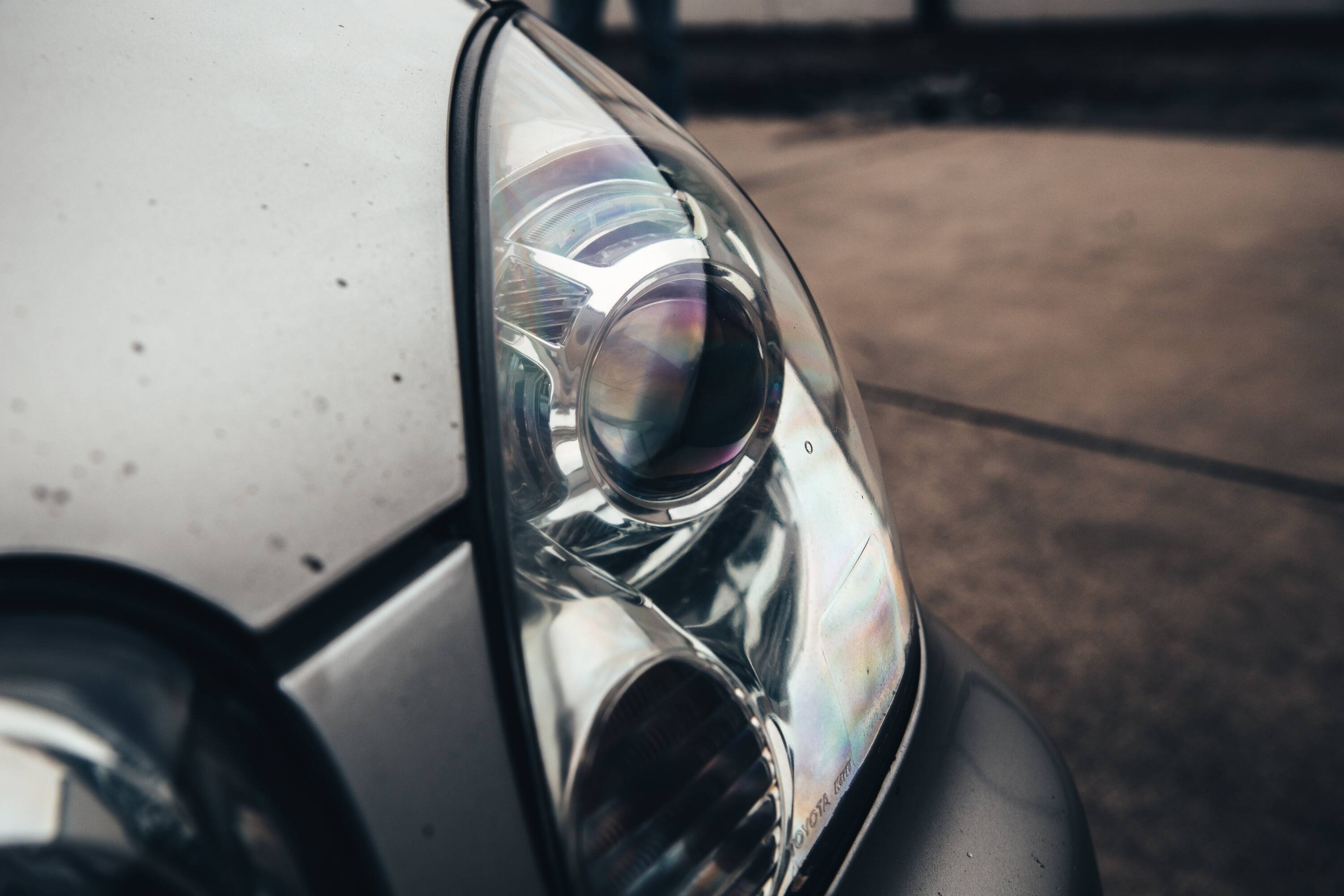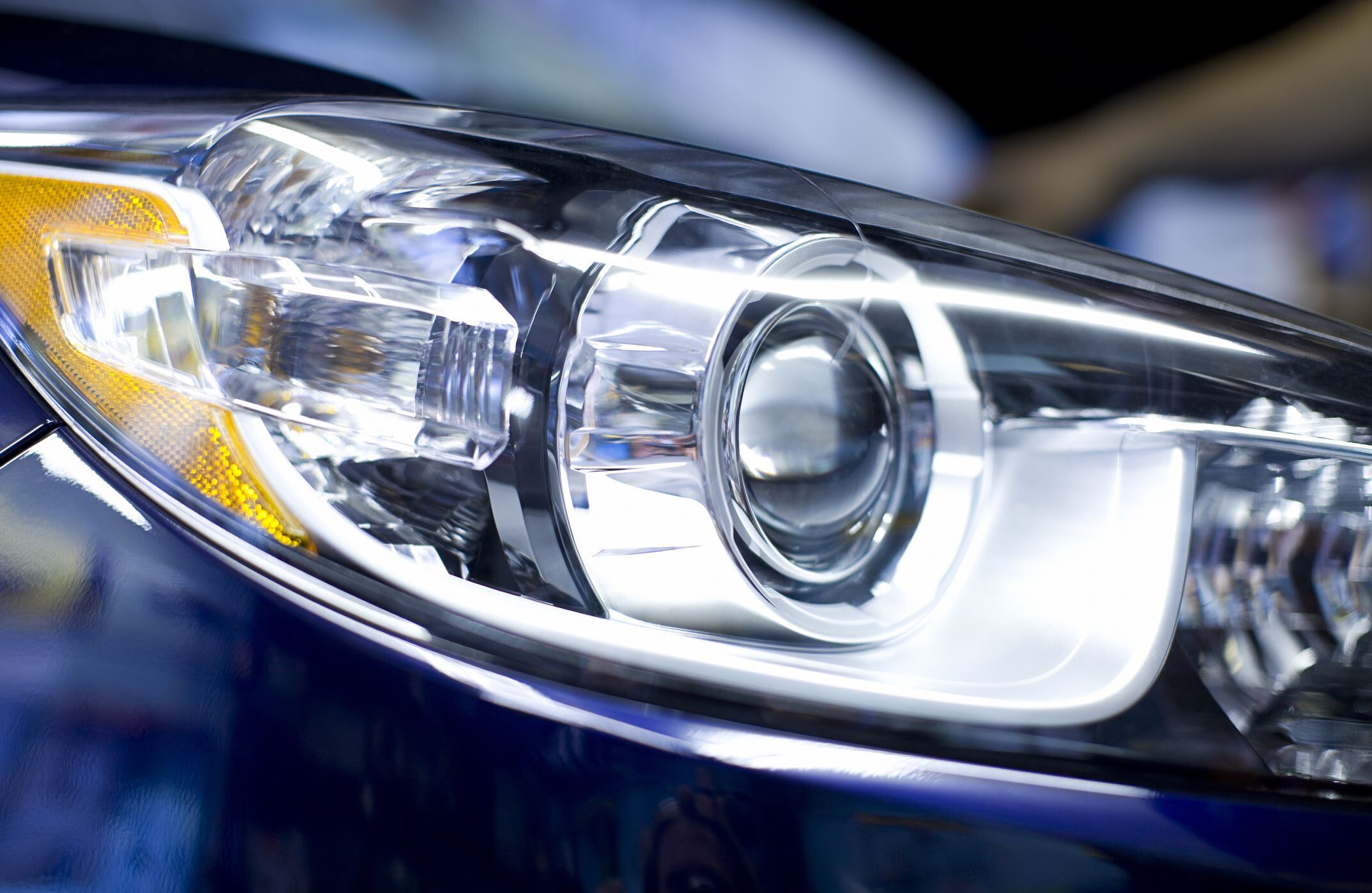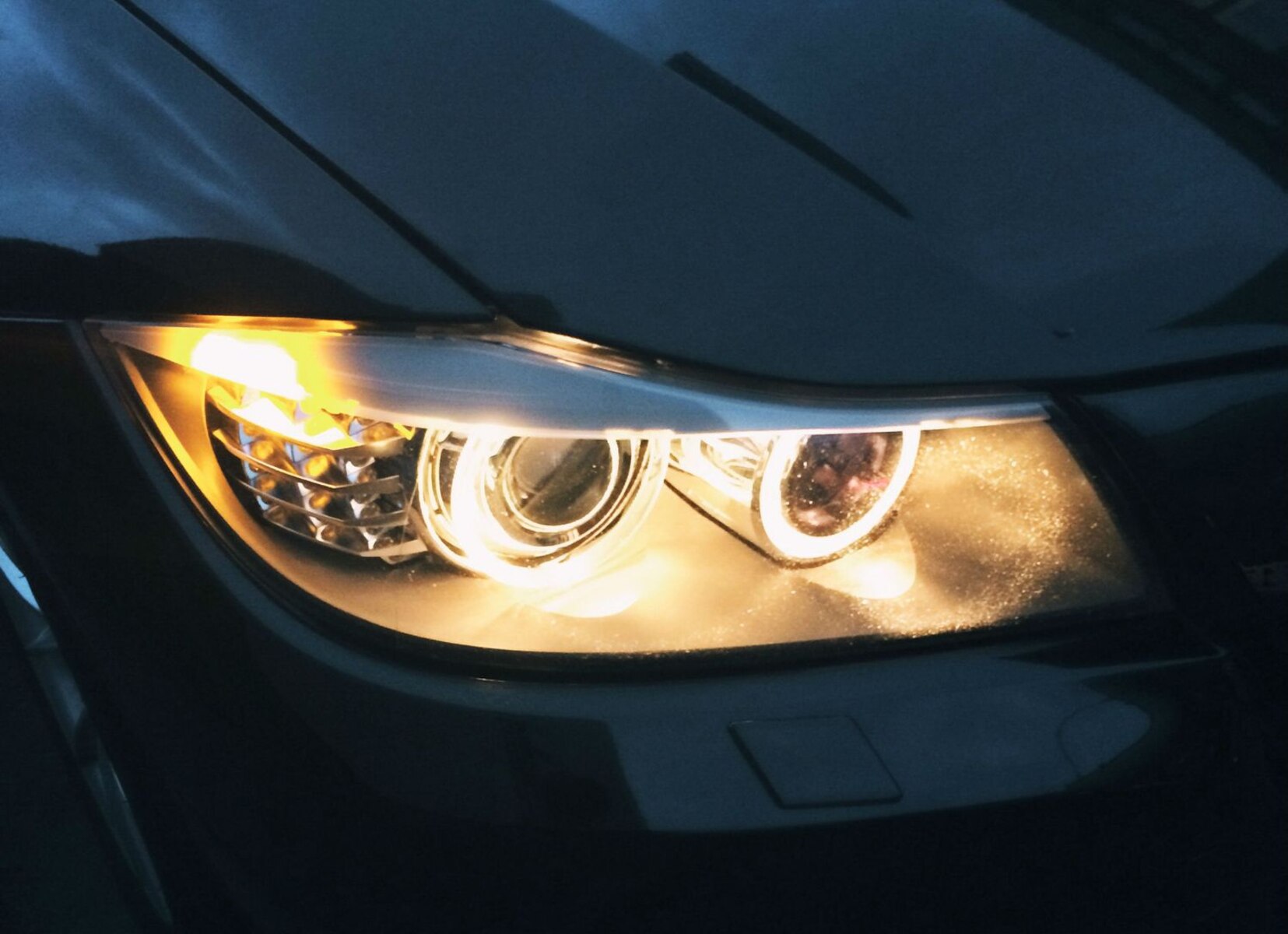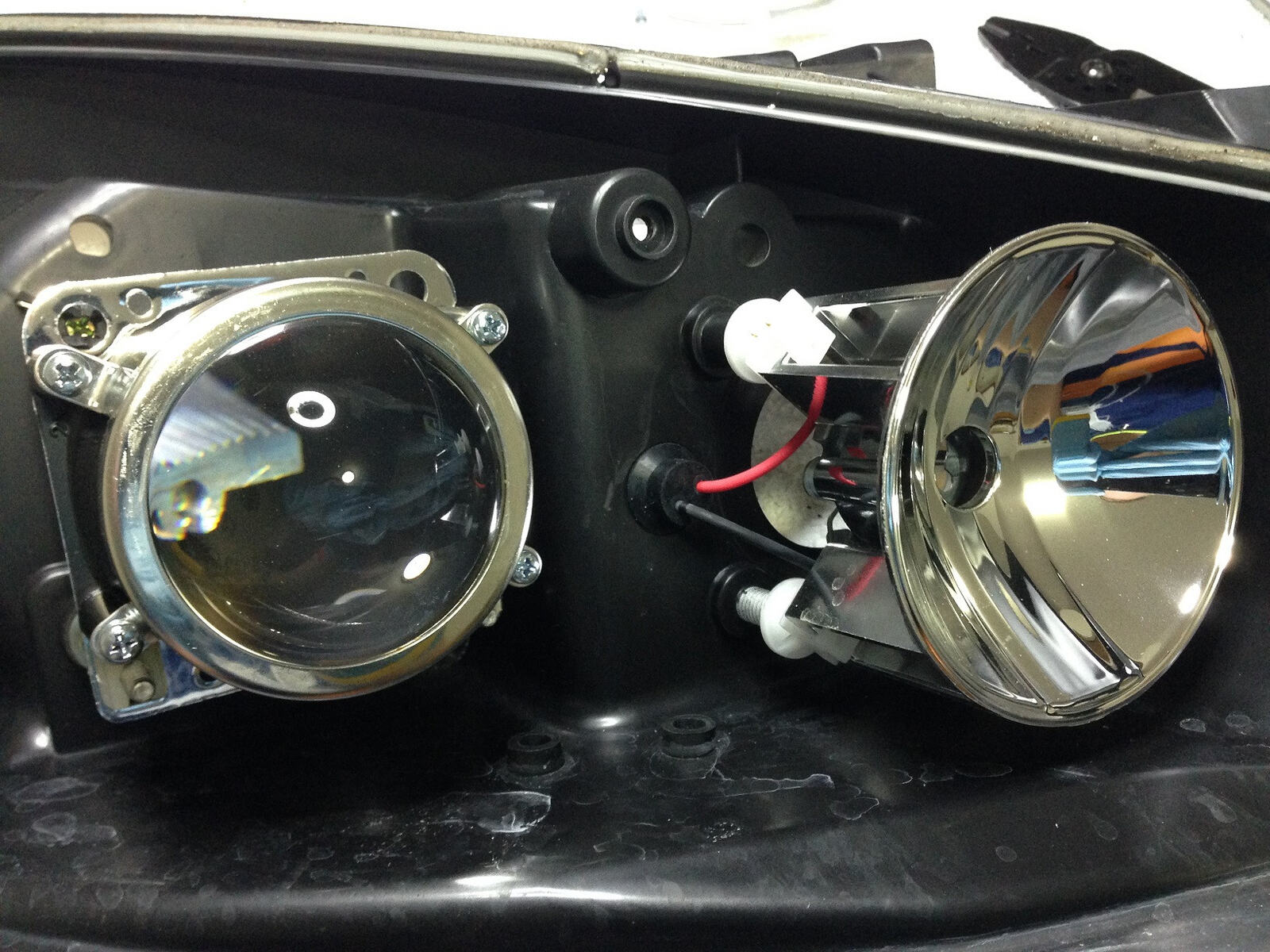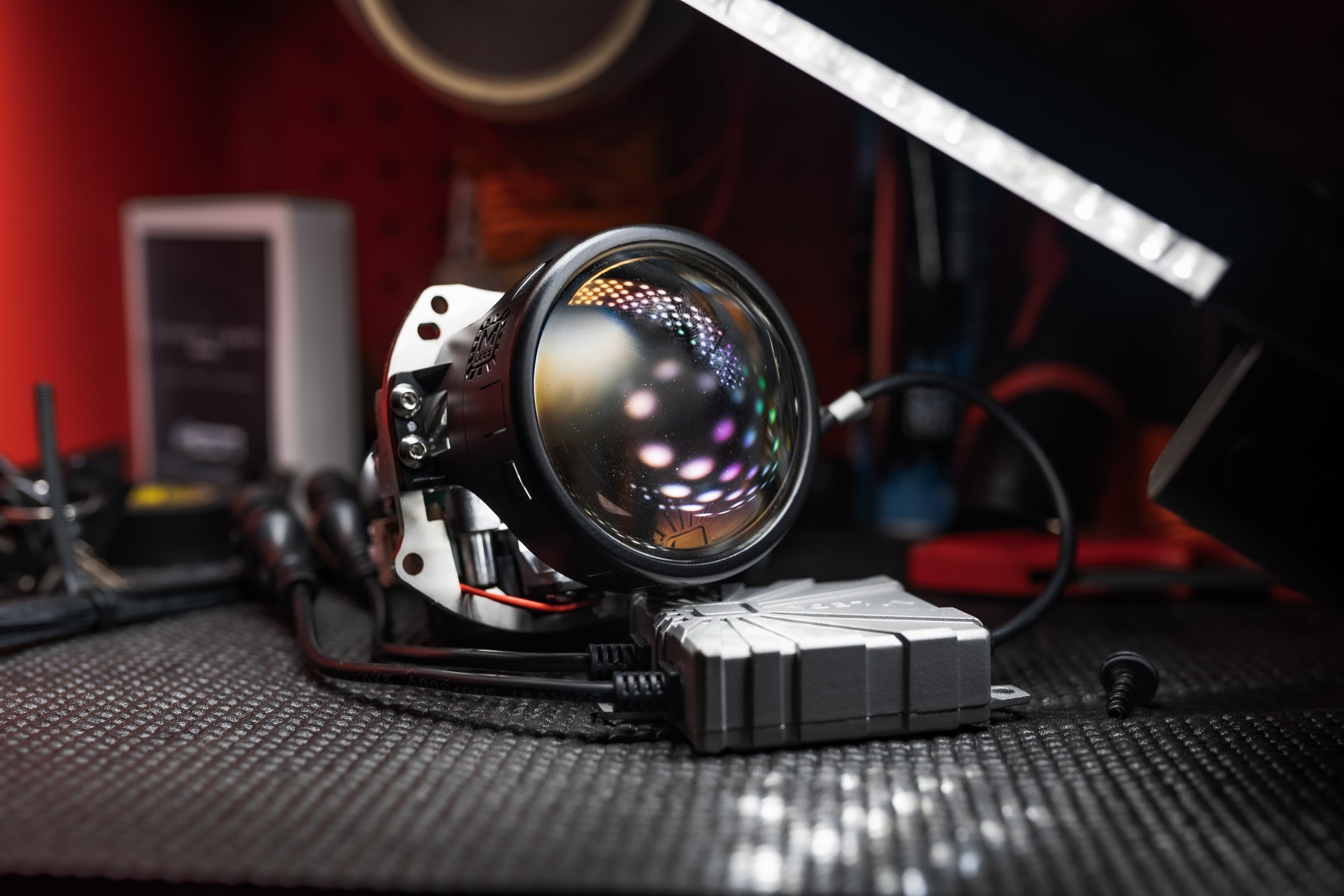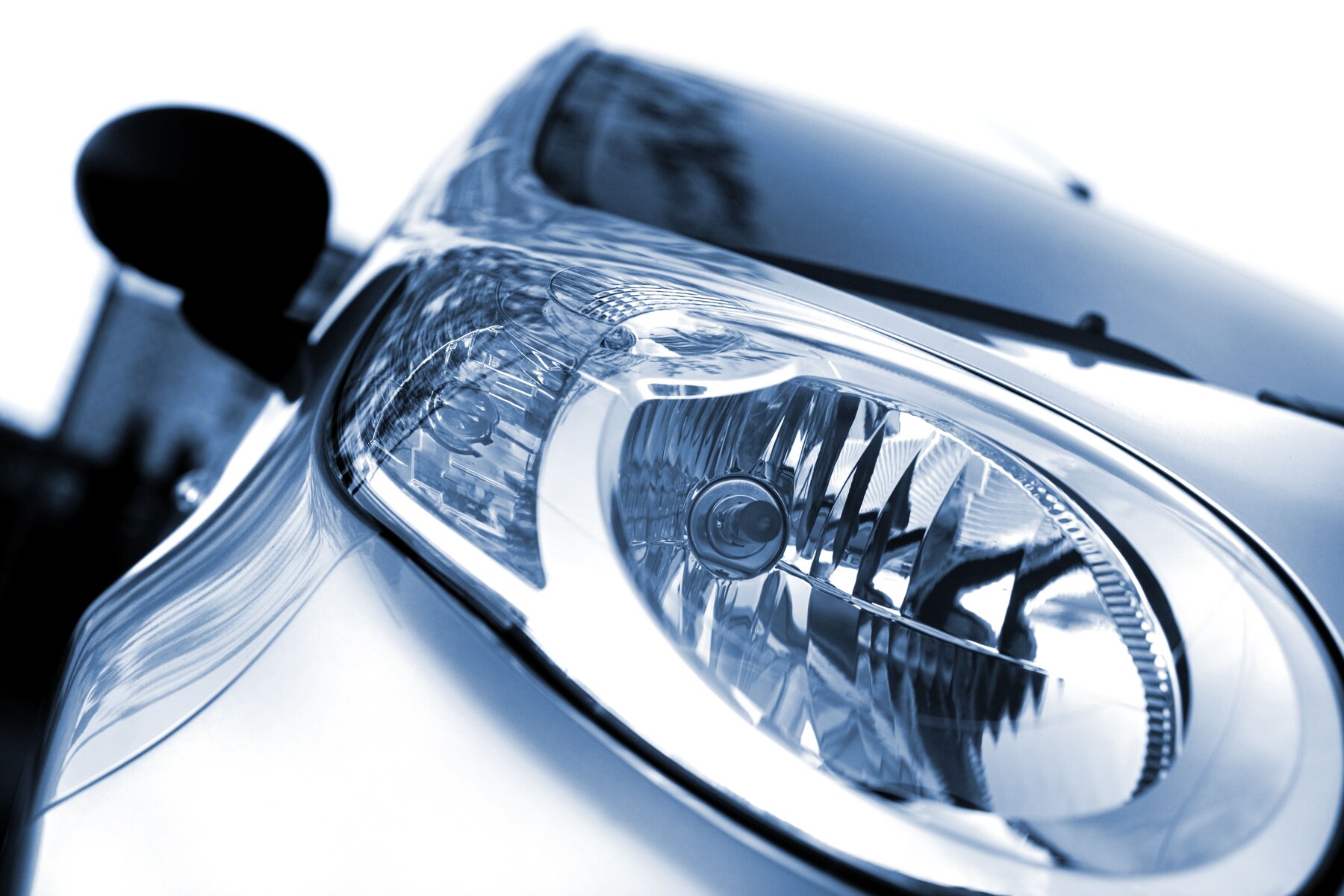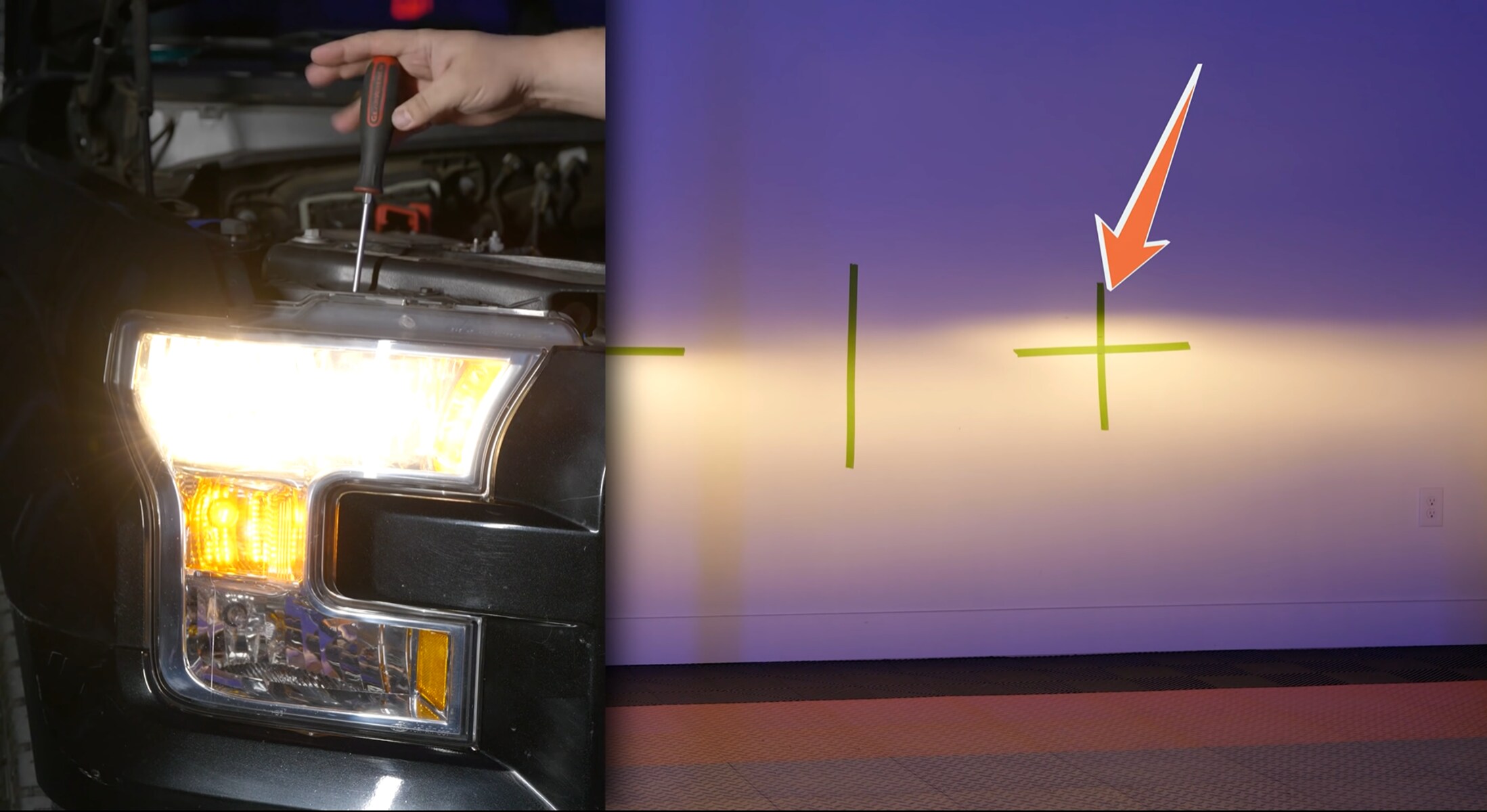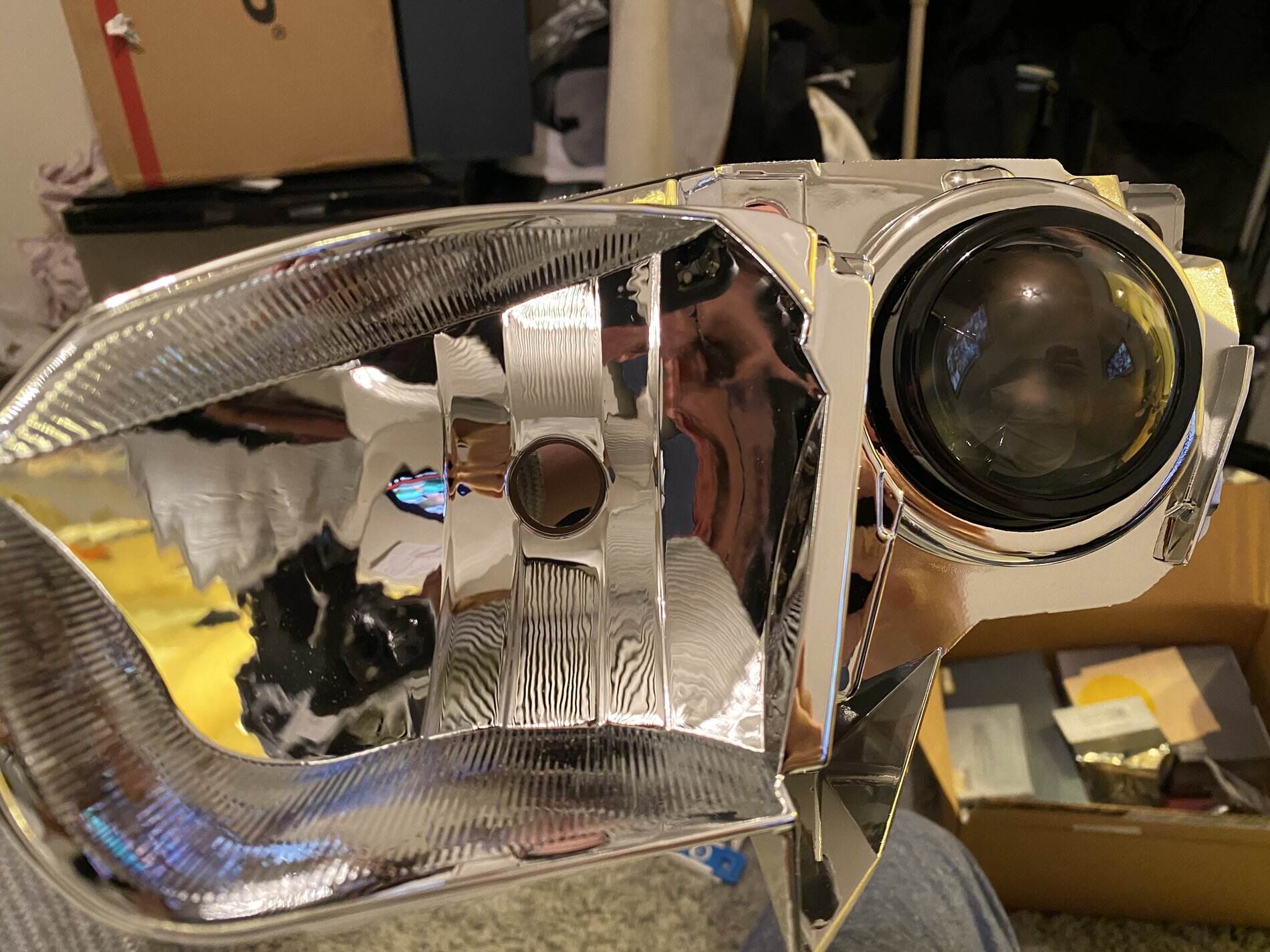Introduction
When it comes to automotive lighting, projector type headlights have become increasingly popular in recent years. These headlights are a significant upgrade from the traditional reflector type headlights, offering numerous benefits in terms of visibility, aesthetics, and safety. If you’re considering upgrading your vehicle’s headlights, it’s essential to understand what projector type headlights are and how they work.
Projector type headlights are a modern lighting system that uses a specific optical design to produce a focused and controlled beam of light. Unlike reflector type headlights that scatter the light in various directions, projector type headlights use a projector lens and a precisely positioned light source to create a clear and intense beam.
The concept behind projector type headlights is similar to the system used in movie projectors. A halogen, xenon, or LED bulb is positioned in front of a curved lens, known as the projector lens. This lens focuses the light emitted from the bulb into a tight beam, which is then projected onto the road ahead.
The projector lens in these headlights helps to create a cutoff line, which separates the illuminated part of the road from the oncoming traffic. This cutoff line ensures that the light is properly directed and prevents blinding other drivers. The result is improved visibility and reduced glare compared to reflector type headlights.
Furthermore, projector type headlights often come equipped with additional features such as a distinctive halo ring or LED accents, adding a stylish and contemporary look to your vehicle. These headlights are available in various designs and styles, allowing you to choose the one that matches your vehicle’s aesthetics.
Projector type headlights have gained popularity not only among car enthusiasts and aftermarket modifiers but also among manufacturers. Many modern vehicles now come equipped with projector type headlights as standard or optional equipment due to their superior performance and safety advantages.
In the following sections, we will delve deeper into how projector type headlights work, their advantages and disadvantages, and how they compare to reflector type headlights. Whether you are considering upgrading your headlights or simply want to learn more about automotive lighting, this guide will provide you with valuable insights into the world of projector type headlights.
What is a Projector Type Headlight?
A projector type headlight is a type of lighting system used in vehicles to provide improved visibility and enhanced aesthetics. Unlike traditional reflector type headlights, which scatter the light in different directions, projector type headlights use a specific optical design to create a focused and controlled beam of light.
The key component of a projector type headlight is the projector lens. This lens, often made of high-quality glass, is positioned in front of the light source, such as a halogen, xenon, or LED bulb. The lens has a curved shape that helps to focus the light emitted from the bulb into a concentrated beam.
The design of the projector lens allows for the creation of a cutoff line, which separates the illuminated part of the road from the oncoming traffic. This cutoff line is crucial as it prevents glare and ensures that the light is properly directed, maximizing visibility for the driver while minimizing the risk of blinding other motorists.
One of the main advantages of projector type headlights is their ability to produce a more intense and focused beam of light compared to reflector type headlights. The projector lens helps to eliminate light scatter, resulting in a clearer and sharper light output. This enhanced visibility can significantly improve the driver’s ability to see the road ahead, especially in challenging conditions such as poor weather or nighttime driving.
In addition to their performance benefits, projector type headlights also offer an appealing aesthetic appeal. Many projector type headlights come equipped with distinctive features such as a halo ring or LED accents, which add a stylish and modern touch to the vehicle’s appearance. These headlights are available in various designs and styles, allowing car owners to personalize their vehicles’ front-end look.
It’s worth noting that projector type headlights are not limited to just high-end or luxury vehicles. While they were initially introduced in premium models, they have become more accessible and are now available for an extensive range of cars. Car owners have the option to upgrade their headlights to projector type headlights either through aftermarket modifications or by choosing a vehicle model equipped with them.
Projector type headlights have gained popularity due to their superior performance, enhanced safety features, and contemporary outlook. They are a popular choice among car enthusiasts who value both functionality and aesthetics. Whether you are seeking improved visibility or want to give your vehicle a modern makeover, projector type headlights are an excellent lighting option to consider.
How do Projector Type Headlights Work?
Projector type headlights employ a specialized design to produce a controlled and concentrated beam of light. Understanding how these headlights work can help you appreciate their advantages over traditional reflector type headlights.
At the core of the projector type headlight system is the projector lens. This lens has a curved shape that acts as a focusing mechanism, allowing the light emitted from the bulb to be directed in a specific manner. The lens captures the light from the bulb and projects it forward onto the road, creating a well-defined beam.
Behind the projector lens, there is a light source such as a halogen, xenon, or LED bulb. These bulbs emit bright and intense light, which is harnessed and channeled by the projector lens. The lens’s curvature helps to refract the light, bringing it to a focal point and creating a beam pattern that is concentrated and focused.
One of the key features of projector type headlights is the presence of a cutoff line. This cutoff line is a distinct boundary between the area of the road that is brightly illuminated and the area where the light is sharply reduced. The cutoff line is formed by the design of the projector lens and is achieved by blocking a portion of the light path from reaching the upper part of the beam.
The cutoff line serves two important purposes. First, it prevents the light from directly shining into the eyes of oncoming drivers, reducing the risk of blinding them. This improves safety on the road by maintaining clear visibility for all motorists. Second, the cutoff line ensures that the light is properly directed towards the road ahead, maximizing the driver’s visibility without wasting or scattering light into unnecessary areas.
Another advantage of projector type headlights is the ability to incorporate additional lighting features. Many projector type headlights come with built-in halo rings or LED accents that surround the projector lens. These features not only enhance the aesthetics of the headlights but also improve visibility and make the vehicle more visually appealing.
It’s important to note that the effectiveness of projector type headlights is influenced by the type of bulb used. Halogen bulbs are commonly used in projector type headlights due to their affordability and compatibility. Xenon bulbs, also known as High-Intensity Discharge (HID) bulbs, offer even greater brightness and longevity. LED bulbs are also gaining popularity for their energy efficiency and long lifespan.
In summary, projector type headlights work by utilizing a projector lens to focus and control the beam of light emitted from the bulb. The design of the lens and the incorporation of a cutoff line help to improve visibility, reduce glare, and enhance safety on the road. Additionally, the ability to incorporate additional lighting features adds a stylish touch to the headlights and the overall appearance of the vehicle.
Advantages of Projector Type Headlights
Projector type headlights offer several advantages over traditional reflector type headlights. These advantages contribute to improved visibility, safety, and aesthetics, making them a popular choice among car owners. Let’s explore the key benefits of projector type headlights.
1. Enhanced Visibility: One of the primary advantages of projector type headlights is their ability to produce a concentrated and focused beam of light. The projector lens ensures that the light is directed precisely where it is needed, resulting in improved visibility for the driver. This increased visibility is particularly beneficial during nighttime driving or in adverse weather conditions, allowing for better detection of obstacles, pedestrians, and road markings.
2. Reduced Glare: Projector type headlights incorporate a cutoff line in their design, which prevents the light from shining directly into the eyes of oncoming drivers. This cutoff line helps to minimize glare and ensures that the light is properly directed towards the road. By reducing glare, projector type headlights enhance safety by maintaining clear visibility for both the driver and other motorists.
3. Stylish Appearance: Many projector type headlights come with distinctive features such as halo rings or LED accents. These features add a touch of style and sophistication to the vehicle’s front-end look. The sleek and modern appearance of projector type headlights can give a fresh and updated aesthetic to any vehicle.
4. Improved Bulb Options: Projector type headlights are compatible with various bulb types such as halogen, xenon, and LED. This flexibility allows car owners to choose the bulb that best suits their preferences and needs. Xenon and LED bulbs, in particular, offer increased brightness, longer lifespan, and energy efficiency, further enhancing the overall performance of the headlights.
5. OEM Integration: Many modern vehicles come equipped with projector type headlights as standard or optional equipment. Car manufacturers recognize the advantages offered by projector type headlights and are increasingly incorporating them into their designs. This OEM integration ensures seamless compatibility and optimal performance.
6. Potential for Customization: Projector type headlights provide car enthusiasts with opportunities for customization. Aftermarket options allow for modifications such as different projector lens designs, color-changing LED accents, or even custom headlight housings. These customization options allow individuals to personalize the appearance of their vehicle and make a unique statement.
Overall, the advantages of projector type headlights include enhanced visibility, reduced glare, stylish aesthetics, improved bulb options, OEM integration, and customization potential. These benefits make projector type headlights a popular choice for individuals seeking superior performance, safety, and a visually appealing look for their vehicles.
Disadvantages of Projector Type Headlights
While projector type headlights offer numerous advantages, they are not without their drawbacks. It is important to be aware of these disadvantages when considering the installation or upgrade to projector type headlights. Let’s explore some of the key disadvantages:
1. Cost: Projector type headlights can be more expensive compared to traditional reflector type headlights. The additional cost is mainly due to the complex design of the projector lens and the integration of advanced lighting technology. This cost factor may influence some car owners to opt for more budget-friendly options.
2. Installation Complexity: Installing projector type headlights can be more complex and time-consuming compared to reflector type headlights. The housing and wiring of the projector assembly may require modification or adaptation to fit properly into the vehicle’s headlight housing. Professional installation or expertise is often recommended to ensure proper alignment and functionality.
3. Bulb Specificity: Projector type headlights are designed to work optimally with specific types of bulbs, such as halogen, xenon, or LED. While this allows for improved performance with the recommended bulbs, it may limit the flexibility to easily swap or upgrade bulbs. Changing to a different bulb type may require additional modifications or compatibility issues.
4. Limited Spread of Light: Due to their focused beam pattern, projector type headlights may have a narrower spread of light compared to reflector type headlights. While this focused beam is beneficial for long-range visibility, it may result in reduced peripheral illumination. It is important to consider the specific lighting requirements of your driving conditions before deciding on projector type headlights.
5. Vulnerability to Moisture and Condensation: The design of projector type headlights, with their intricate lenses and housings, can make them more susceptible to moisture and condensation buildup. This can occur due to changes in temperature and weather conditions. Adequate sealing and maintenance are necessary to prevent water ingress and ensure the longevity of the headlights.
6. Compatibility with Factory Wiring: Upgrading to projector type headlights may require modifications to the factory wiring system. Depending on the vehicle model and electrical setup, compatibility issues can arise, making the installation more challenging. Additional wiring harnesses or adapters may be needed to ensure proper connectivity and functionality.
While these disadvantages should be taken into consideration, it is crucial to weigh them against the benefits of projector type headlights. Each vehicle and driver’s needs are unique, and a careful evaluation of these factors will help determine if projector type headlights are the right choice for you.
Projector Type Headlights vs. Reflector Type Headlights
When considering the best type of headlights for your vehicle, it’s important to compare projector type headlights and reflector type headlights to make an informed decision. Let’s examine the key differences between these two types of headlights:
1. Light Output and Beam Pattern: Projector type headlights produce a focused and controlled beam of light, thanks to the design of the projector lens. This results in a sharper and more defined beam with limited scatter. On the other hand, reflector type headlights disperse the light through a reflective surface, which can lead to a wider beam but with less concentrated brightness.
2. Visibility and Limited Glare: Projector type headlights offer improved visibility due to their ability to create a cutoff line. This cutoff line prevents the light from directly shining into the eyes of oncoming drivers, reducing glare and enhancing safety. Reflectors do not have a cutoff line, which can cause more glare for other drivers on the road.
3. Aesthetics: Projector type headlights often come with additional features such as halo rings or LED accents, enhancing the vehicle’s appearance. These distinctive features give a modern and stylish look to the front-end of the vehicle. In contrast, reflector type headlights have a more traditional and plain design.
4. Efficiency and Longevity: Projector type headlights tend to be more energy-efficient compared to reflector type headlights. This efficiency is partly due to the focused beam pattern and the use of advanced lighting technologies such as xenon or LED bulbs. Additionally, projector type headlights typically have a longer lifespan, requiring less frequent bulb replacements.
5. Cost and Availability: Projector type headlights, with their sophisticated design and specialized components, can be more expensive than reflector type headlights. The availability of projector type headlights may also vary, as they are often found in higher-end or newer vehicle models. Reflectors, on the other hand, are more commonly used and readily available for a wide range of vehicles.
6. Retrofitting or Upgrading: It is generally easier to upgrade or retrofit vehicles with reflector type headlights to projector type headlights compared to the other way around. This flexibility allows car owners to transform their existing headlights into projector type headlights, benefiting from the improved performance and aesthetics without the need for significant modifications or replacements.
Ultimately, the choice between projector type headlights and reflector type headlights depends on individual preferences, budget, and specific driving needs. If you prioritize enhanced visibility, reduced glare, and a contemporary look, projector type headlights may be the ideal option. If cost, availability, or ease of retrofitting is more important, reflector type headlights might be a suitable choice. Consider your priorities and consult with automotive professionals to determine which headlight type best suits your requirements.
Upgrading to Projector Type Headlights
If you are interested in upgrading your vehicle’s headlights to projector type headlights, there are a few important considerations to keep in mind. While the process may vary depending on the make and model of your vehicle, here are some general steps to guide you through the upgrading process:
1. Research and Compatibility: Start by researching compatible projector type headlights for your specific vehicle model. Look for reputable manufacturers or consult with automotive professionals who can guide you in selecting the right headlights that are designed to fit your car’s headlight housing and wiring.
2. Purchase the Headlights: Once you have determined the compatible projector type headlights, make the purchase from a trusted source. Consider your budget, desired features, and the included warranty when making your selection.
3. Prepare for Installation: Gather the necessary tools for the installation process. These may include screwdrivers, sockets, wire cutters, and electrical connectors. It’s also a good idea to read through the installation instructions provided by the manufacturer to familiarize yourself with the process.
4. Disconnect the Battery: Before beginning the installation, disconnect the negative terminal of the vehicle’s battery to ensure electrical safety during the process. This step will help avoid any accidental short circuits or electrical damage.
5. Remove the Existing Headlights: Remove the old headlights by disassembling the casing and disconnecting any wiring harnesses. Be sure to keep track of any bolts, screws, or clips that need to be removed, as you will need them later for the installation of the new projector type headlights.
6. Install the Projector Type Headlights: Follow the manufacturer’s instructions to install the new projector type headlights. This step typically involves connecting the wiring harnesses, securing the headlights with the appropriate bolts or screws, and adjusting the angle of the projector lens for proper beam alignment.
7. Test and Adjust: Once the new headlights are installed, reconnect the battery and test the functionality of the projector type headlights. Check that the beam pattern is aligned correctly and adjust if necessary. Ensure that all electrical connections are secure and that the headlights are working as expected.
8. Proper Alignment: It’s crucial to properly align the projector type headlights to avoid causing glare for other drivers. If needed, consult with a professional or utilize headlight alignment tools to ensure the beams are correctly aimed and do not impede the visibility of oncoming traffic.
Keep in mind that the process of upgrading to projector type headlights may be more complex for some vehicles, requiring additional modifications or professional assistance. If you are unsure or uncomfortable with the installation process, it is recommended to seek the help of a certified automotive technician or headlight specialist to ensure a proper installation and alignment.
By upgrading to projector type headlights, you can enjoy the benefits of improved visibility, reduced glare, enhanced aesthetics, and customizable lighting features. Upgrade your vehicle’s lighting system with confidence and enjoy the enhanced driving experience that projector type headlights provide.
Conclusion
Projector type headlights offer numerous advantages over traditional reflector type headlights, making them a popular choice for car enthusiasts and safety-conscious drivers. The focused beam pattern, enhanced visibility, reduced glare, and customizable features of projector type headlights provide several benefits for both aesthetics and functionality.
With their unique design, projector type headlights improve visibility on the road, especially during nighttime and inclement weather conditions. The incorporation of a cutoff line helps prevent glare and ensures that the light is properly directed, enhancing safety for both the driver and other motorists.
Furthermore, the stylish appearance of projector type headlights, with additional features like halo rings or LED accents, adds a modern and distinctive touch to the vehicle. This customization potential allows for a personalized look that matches individual preferences and enhances the overall aesthetics of the vehicle.
Although there are some disadvantages to be aware of, such as cost, installation complexity, and limited spread of light, the advantages of projector type headlights outweigh them for many car owners.
If you are interested in upgrading your vehicle’s headlights, it is crucial to consider factors such as compatibility, bulb type, and the specific requirements of your vehicle model. Additionally, seeking professional guidance and installation, especially for complex retrofits, is highly recommended to ensure proper alignment, functionality, and safety.
Whether you choose to upgrade your headlights to projector type headlights or stick with traditional reflector type headlights, prioritizing visibility and safety on the road should be paramount. Understanding the differences and benefits of different headlight options will assist you in making an informed decision that best suits your driving needs and preferences.
Whichever type of headlight you choose, investing in a well-functioning and properly maintained lighting system will ultimately contribute to a safer and more enjoyable driving experience.







